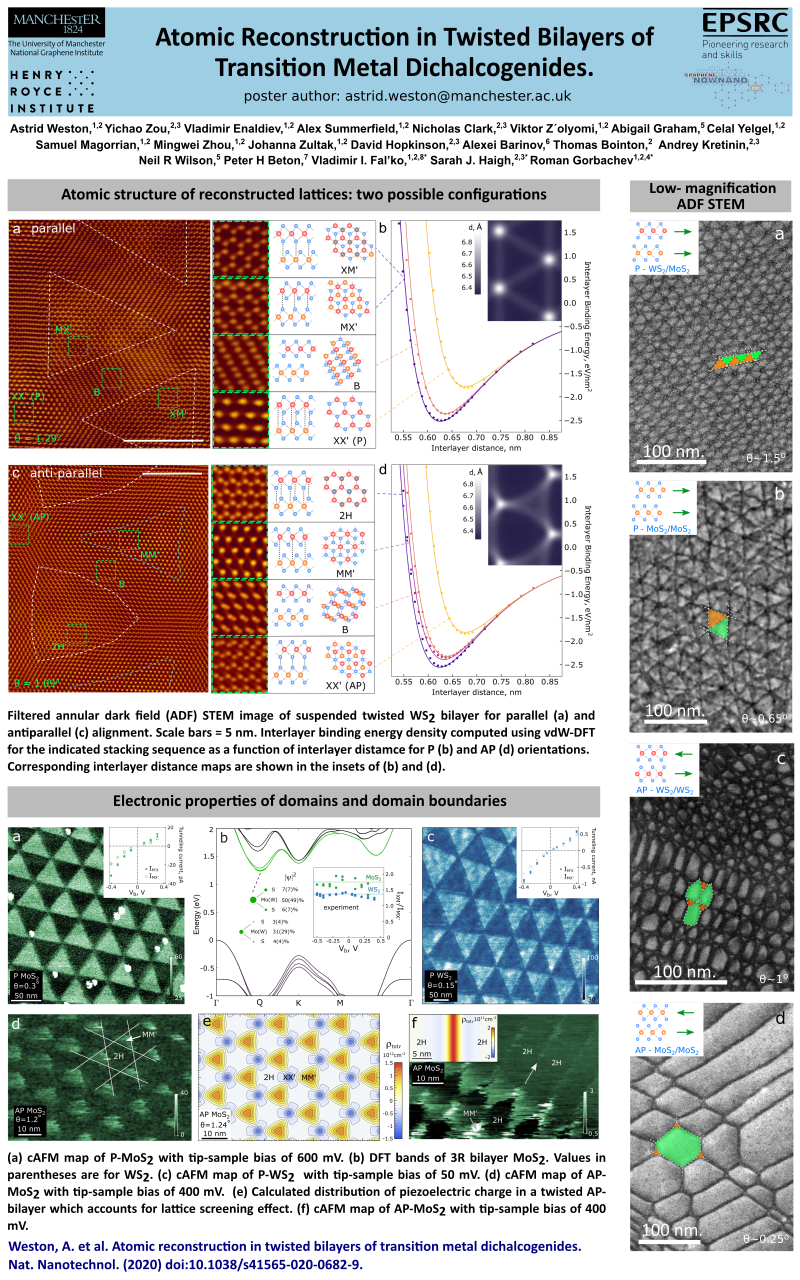Lattice reconstruction in twisted bilayers of transition metal dichalcogenides
ABSTRACT
Atomic resolution transmission electron microscopy and multiscale modelling have been used to illustrate that the lattice of MoS2 and WS2 homo-bilayers with small relative twist (< 3) reconstructs to form energetically favourable stacking domains separated by stacking faults. With a crystal alignment close to 3R stacking (θ ~ 0) mirror reflected triangular domains emerge separated by a network of partial dislocations which persist to the smallest twist angles. Scanning tunnelling measurements show contrast in electronic properties of 3R and 2H domains; for 3R domains we observe contrast in the tunnelling current due to layer-polarized conduction band states as a consequence of lack of both inversion and mirror symmetry. For small twist angles close to 2H stacking (θ ~ 60), stable 2H domains dominate where the nuclei of a previously unnoticed metastable stacking is limited to ~ 5nm in size. With relative twist θ~1, this appears as a kagome-like pattern which transitions to an hexagonal array of screw dislocations that separate large-area commensurate 2H domains.
PRESENTER
Astrid Weston
University of Manchester
Trackbacks & Pingbacks
Leave a Reply
Want to join the discussion?Feel free to contribute!


Dear Astrid,
Could I ask you how did you prepare the samples? What is the typical critical angle where reconstruction occurs in twisted TMDCs?
Cheers,
Andreij Gadelha.